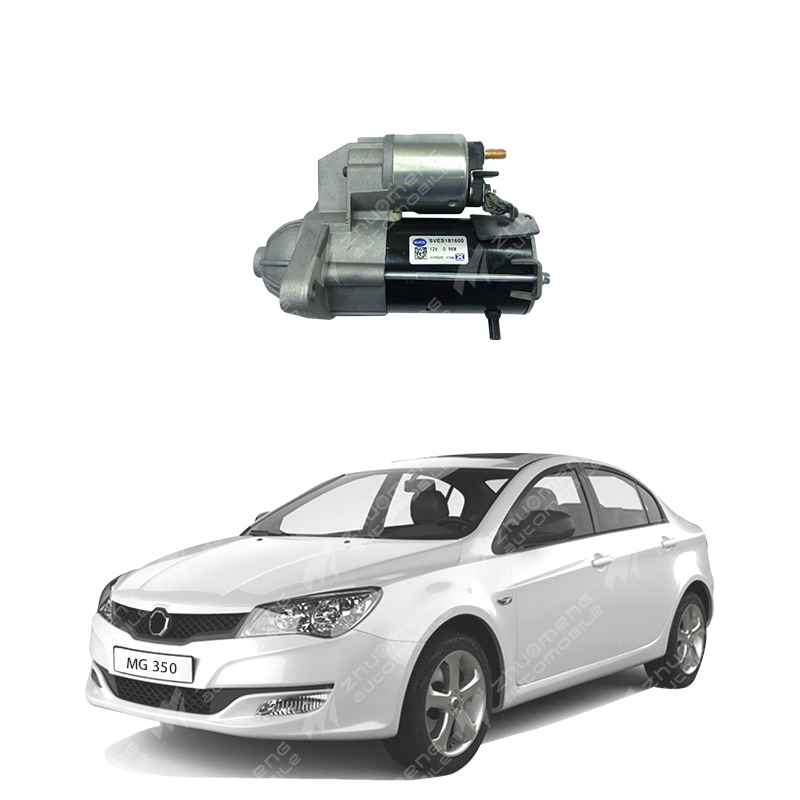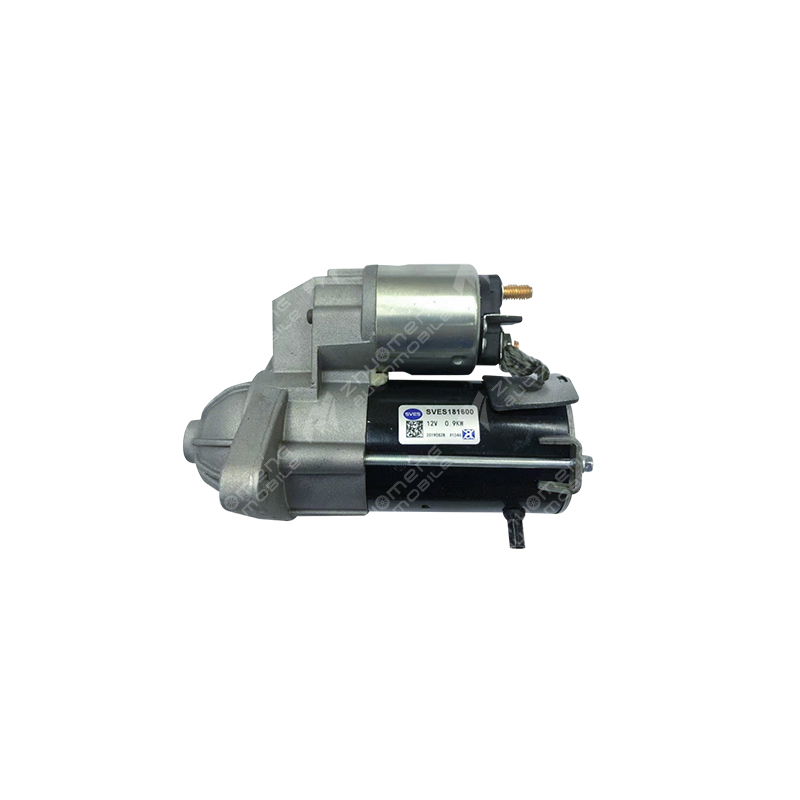The structure and principle of electric starting motor of diesel engine are explained in detail
First, the structure and working principle of the starting motor
01
The starting motor of the diesel engine is mainly composed of three parts: transmission mechanism, electromagnetic switch and direct current motor.
02
The working principle of the starting motor is to convert the electric energy of the battery into mechanical energy, drive the flywheel tooth ring on the diesel engine to rotate, and realize the start of the diesel engine.
03
The DC motor on the starting motor generates electromagnetic torque; The transmission mechanism makes the driving pinion of the starting motor mesh to the flywheel tooth ring, transfers the torque of the direct current motor of the starting motor to the flywheel tooth ring of the diesel engine, drives the crankshaft of the diesel engine to rotate, thus driving the diesel engine components into the working cycle until the diesel engine starts normally; After the diesel engine starts, the starting motor automatically detach the flywheel tooth ring; The electromagnetic switch is responsible for connecting and cutting off the circuit between the DC motor and the battery.
Second, forced engagement and soft engagement
01
At present, most of the diesel engines on the market are forced meshing. Forced meshing means that the pinion of the starting motor one-way device moves directly axially and makes contact with the flywheel tooth ring, and then the pinion rotates at high speed and engages with the flywheel tooth ring. The advantages of forced meshing are: large starting torque and good cold starting effect; The disadvantage is that the pinion of the starting motor one-way gear has a large impact on the flywheel tooth ring of the diesel engine, which may cause the pinion of the starting motor to be broken or the flywheel tooth ring to wear, and the possible "crawling" mesh action will cause mechanical damage to the drive end cover and bearings and other components, affecting the service life of the starting motor.
02
Soft meshing: On the basis of the original forced meshing starting motor, a flexible mechanism is added to achieve soft meshing. Its working principle is: when the driving pinion rotates at low speed and engages axially to 2/3 depth of the flywheel tooth ring, the main circuit on the starting motor is connected, and then the pinion rotates at high speed and drives the flywheel tooth ring. The design prolongs the service life of the starting motor and reduces the impact of the driving pinion on the flywheel tooth ring. The disadvantage is that it affects the transmission efficiency of torque.
3. The common fault judgment of the starting motor (this part only discusses the starting motor itself)
01
Check whether the starting motor is normal or not, usually to energize it, and observe whether there is an axial feed action after energizing, and whether the motor speed is normal.
02
Abnormal sound: Different factors caused by the abnormal sound of the starting motor, the sound is different.
(1) When the main switch of the starting motor is switched on too early, the driving pinion does not engage with the flywheel tooth ring of the diesel engine, that is, high-speed rotation, and the driving pinion of the starting motor impacts the flywheel tooth ring, resulting in sharp toothing sound.
(2) The start motor drive gear engages with the flywheel tooth ring, and drives the diesel engine to operate normally, and suddenly produces a meshing impact sound, which is generally caused by the start motor drive pinion is not reached and the flywheel tooth ring is separated, which may be caused by poor meshing, the return spring is too soft or the start motor one-way clutch damage.
(3) After pressing the start button, the start motor is completely silent, mostly caused by the internal break of the start motor, the iron, the short circuit or the failure of the electromagnetic switch. During the inspection, a thick wire should be selected on the premise of ensuring safety, with one end connected to the starting motor magnetic field terminal and the other end connected to the battery positive terminal. If the starting motor runs normally, it indicates that the fault may be in the electromagnetic switch of the starting motor; If the starting motor does not run, it should be observed that there is no spark when wiring - if there is a spark, it indicates that there may be a tie or short circuit inside the starting motor; If there is no spark, it indicates that there may be a break in the starting motor.
(4) After pressing the start button, there is only the sound of the start motor axial feed tooth but no motor rotation, which may be a DC motor failure or insufficient torque of the DC motor.
4. Precautions for the use and maintenance of the starting motor
01
Most of the internal starting motor has no heat dissipation device, the working current is very large, and the longest starting time can not exceed 5 seconds. If one start is not successful, the interval should be 2 minutes, otherwise the starting motor overheating may cause the starting motor failure.
02
The battery should be kept sufficient; When the battery is out of power, too long starting time is easy to damage the starting motor.
03
Check the fixing nut of the starting motor frequently, and tighten it in time if it is loose.
04
Check wiring ends to remove stains and rust.
05
Check whether the start switch and the main power switch are normal.
06
Try to avoid starting in a short time and high frequency to extend the service life of the starting motor.
07
Diesel engine maintenance as required to ensure the normal operation of the system to reduce the starting load.



